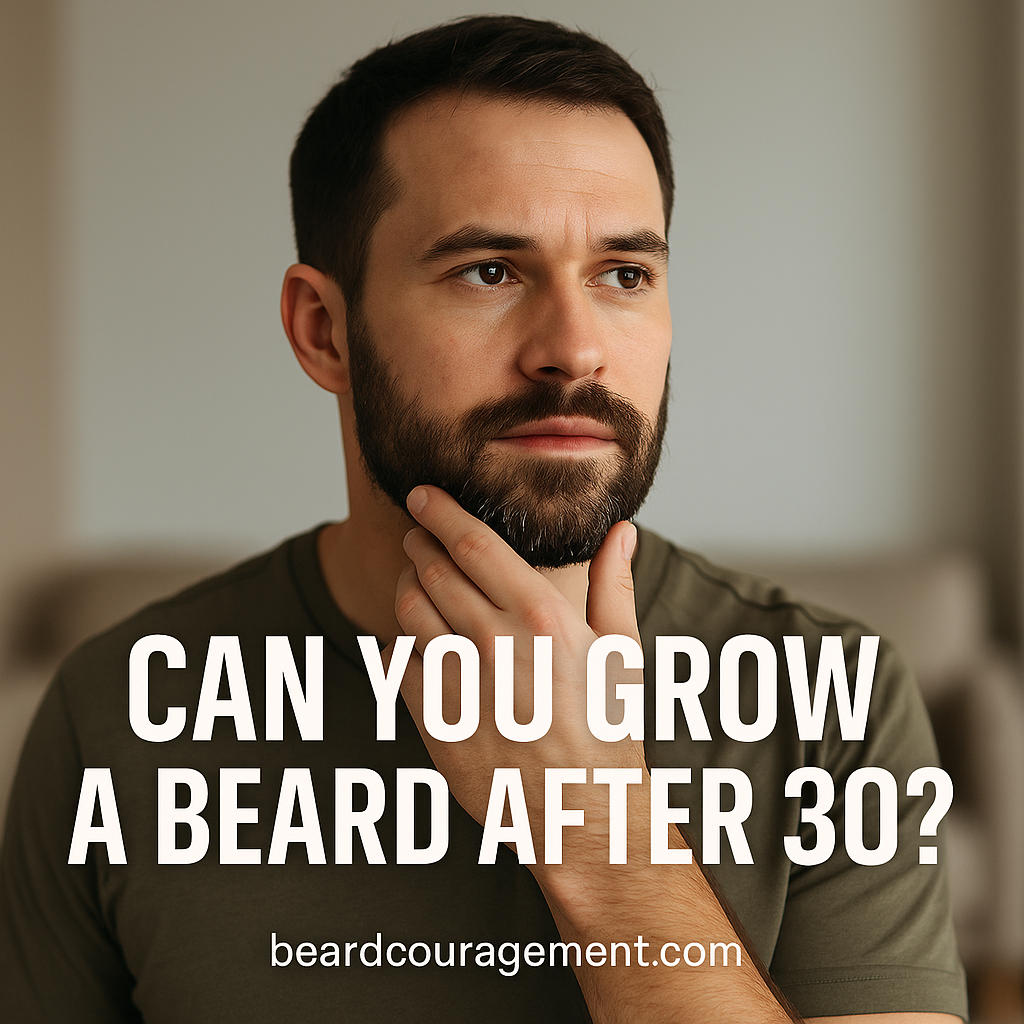
Many men believe that if they didn’t grow a full beard in their early 20s, their chance has passed. But here’s the truth — your beard journey doesn’t have an expiration date. While genetics play a major role, hormone levels, lifestyle, and age all influence how your facial hair develops. And yes — it’s absolutely possible to grow a thicker, fuller beard after 30.
The Myth: “If It Hasn’t Grown by Now, It Never Will”
This is one of the most common beard myths around. Many assume facial hair stops developing after puberty, but that’s not true. Beard growth is influenced by testosterone and dihydrotestosterone (DHT) — both of which can remain stable or even increase slightly through your late 20s and early 30s.
For many men, new growth areas fill in gradually with age. Hair density and thickness can change, especially around the jawline, cheeks, and chin. Your 30s can actually be a time when your beard matures — not declines.
The Science Behind Late Beard Growth
- Hormone Stabilization: As men age, hormone levels balance out, often leading to improved beard consistency.
- Improved Health Habits: Better sleep, nutrition, and lower stress can positively affect hair growth.
- Slower Follicle Activation: Some follicles take longer to activate, and may not show full potential until your 30s.
- Circulation and Skincare: A healthy skin environment promotes thicker, more even growth.
In short — your beard can still evolve well past 30. The key is patience and care.
How to Encourage Growth After 30
- Focus on Nutrition: Include foods rich in biotin, zinc, and omega-3s.
- Exercise Regularly: Physical activity helps regulate testosterone and circulation.
- Keep Your Skin Healthy: Use exfoliants and beard oils to unclog follicles and condition your beard.
- Stay Consistent: Growth takes time — don’t shave prematurely. Give your beard 3–4 months before judging results.
- Manage Stress: High cortisol levels can slow hair growth, so rest and mindfulness matter too.
When to Consider Supplements or Treatments
If you’re past 30 and still struggling with sparse growth, you’re not alone. Many men have patchy or slow-developing beards due to genetics. Over-the-counter supplements containing biotin, vitamin D, and collagen may support follicle health.
Some men explore medical treatments like minoxidil (after consulting a dermatologist). The key is setting realistic expectations — not everyone will grow a full lumberjack beard, but improvement is often achievable.
The Bottom Line
Growing a beard after 30 isn’t just possible — it’s common. With proper care, nutrition, and consistency, many men see new growth or improved thickness in their 30s and even 40s.
Your beard journey is unique. Age doesn’t close the door on growth — it just gives you the patience and discipline to do it right.
